America’s largest luxury watch show, WatchTime New York, returns to Manhattan’s Gotham Hall on October 26-27 (click here for event details and to purchase tickets). As we count down to the big event, we continue to spotlight many of the new timepieces that guests will discover there. Today we turn our attention to one of the new chronograph models within Czapek & Cie’s third collection of timepieces: the Faubourg de Cracovie Dioné & Rhea.
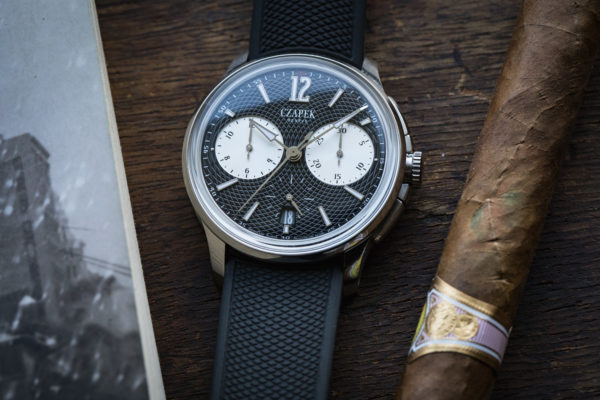
Longtime readers of WatchTime should be familiar with the story of François (born Franciszek) Czapek at this point. He was the original partner of Antoine Norbert de Patek (of Patek Philippe) before leaving the nascent brand to form his own watchmaking atelier, Czapek & Cie, in 1845. A Polish immigrant in Geneva, he is credited with opening what is considered the first watch boutique on the Place Vendôme in Paris and served as the official watchmaker to Napoleon III during his lifetime. After his death, the brand slowly faded into obscurity until it was finally revived in 2015.
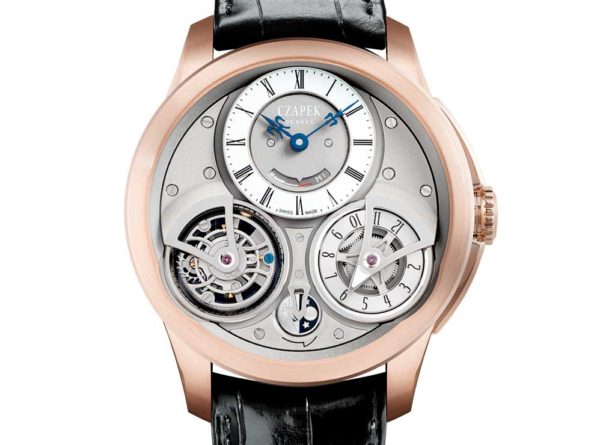
In the three years that have passed since the brand’s resurrection, Czapek & Cie has claimed the Public Prize at the Grand Prix de l’Horlogerie for the Quai des Bergues timepiece in 2016 and released a second collection featuring a suspended tourbillon with GMT. This year, Czapek announced its third collection at Baselworld featuring its first contemporary chronograph: the Faubourg de Cracovie.
Named after the location of François Czapek’s third boutique in his home country of Poland, the Faubourg de Cracovie contains three new timepieces with two different dial finishes in Grand Feu enamel and Ricochet guilloché. The model we’re focusing on today is the Dioné & Rhea, which would be more commonly recognized as having a reverse panda design.
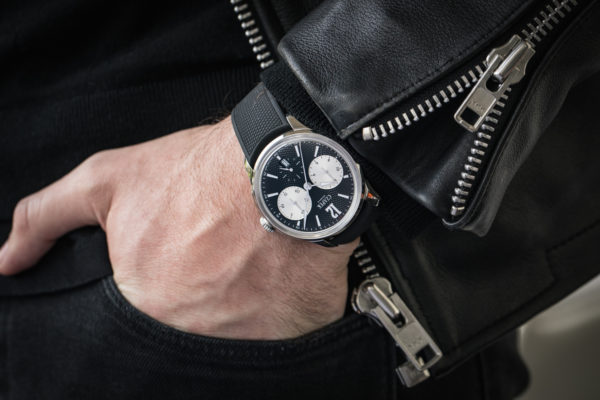
That title is borrowed from two of Saturn’s four moons that were discovered by the Italian astronomer Cassini and named after two Titanesses in Greek mythology. The watch earned the name thanks to the two white subdials that stand out in the darkness of the dial just like moons in the night sky. These two counters have been enlarged from the two that appeared in the Quai des Bergues (which featured small seconds, power reserve, and day of week indicator) and placed at 3 (12-hour display) and 9 (30-minute counter) o’clock. At 6 o’clock, there’s a small seconds display that is painted onto the dial with a color-matching date aperture neatly integrated into its lower half.
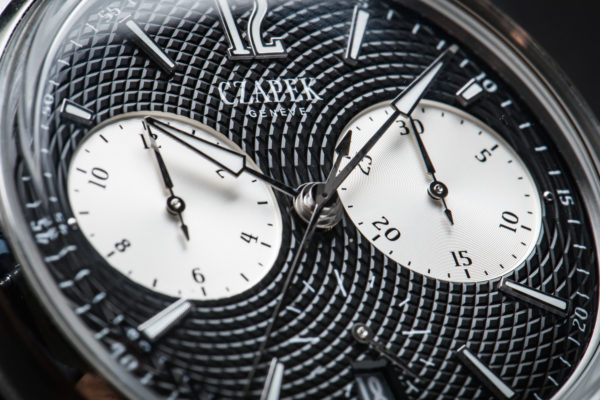
A word on the dial: The “Ricochet” guilloché design is a François Czapek invention and features intersecting circular lines with an 8/10th-mm wide groove that forms a pattern of bas-relief squares that most closely resemble the appearance of ripples in the water after a stone is dropped in. It’s an incredibly intriguing presentation that really draws the viewer in and needs to be seen in person to be fully appreciated. The guilloché is, of course, created through the use of a rose-engine lathe that is hand turned. The two white subdials, on the other hand, feature a snailed finish to complement the ricochet look.
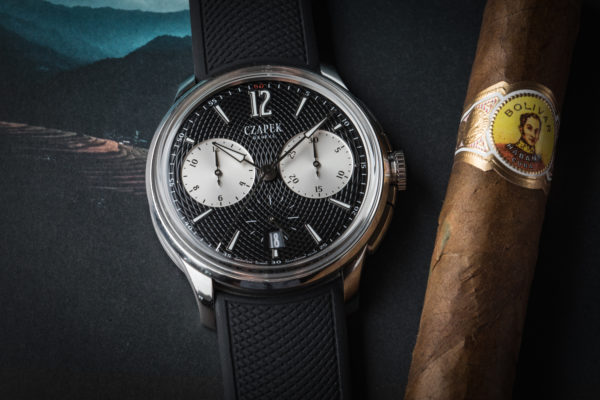
Time is told through the applied indexes, all of which are long baton in structure other than an enlarged Arabic numeral for 12 o’clock at the top of the dial. A minute track runs along the inside of the watch with a small red “60” placed above the 12 o’clock mark. This color choice is further complemented by the red tip of the chronograph seconds hand in an ultra-thin trotteuse design. All the hands are constructed from rhodium-plated steel. The dial as a whole is set underneath a sapphire crystal with an anti-reflective treatment.
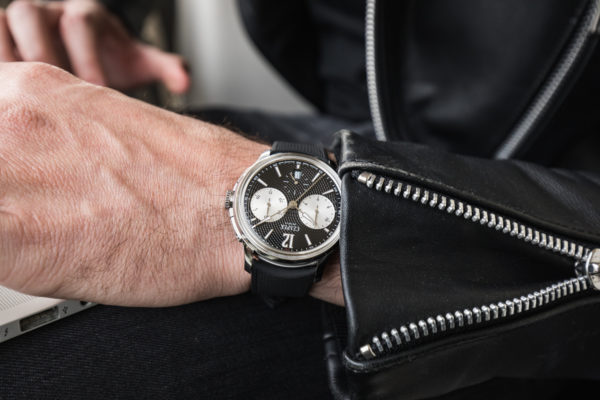
The stainless steel case that the Dioné & Rhea model comes in is a modified version of the brand’s previous Quai des Bergues Revolution case. The recognizable crown protectors from that series have been transformed into the subtle chronograph pushers. It’s sized at a very reasonable 41.5 by 14.6 mm.
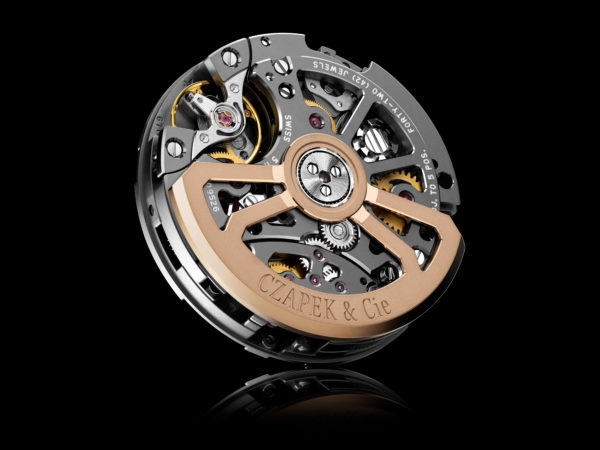
The automatic movement found inside all three of the Faubourg de Cracovie timepieces was exclusively built for Czapek by Vaucher Manufacture Fleurier. Given the name SXH3, it’s the brand’s third exclusive movement after the seven-day, manually-wound caliber inside the Quai des Bergues and the suspended tourbillon GMT movement inside the Place Vendôme timepiece. The SXH3 is an integrated, column-wheel chronograph movement that provides a 65-hour power reserve from a single barrel that drives the balance wheel at 36,000 vph. The linear hammer helps reduce deterioration of parts and resets the timing function with a single click of the pusher. The vertical clutch ensures the chronograph seconds starts immediately, and the sand- and diamond-blasted anthracite bridges enhance the overall attractiveness of the movement that is visible through an exhibition caseback. The snailed trottoirs further complement its appearance.
The Czapek Faubourg de Cracovie Dioné & Rhea is priced at CHF 24,000 and is available now.
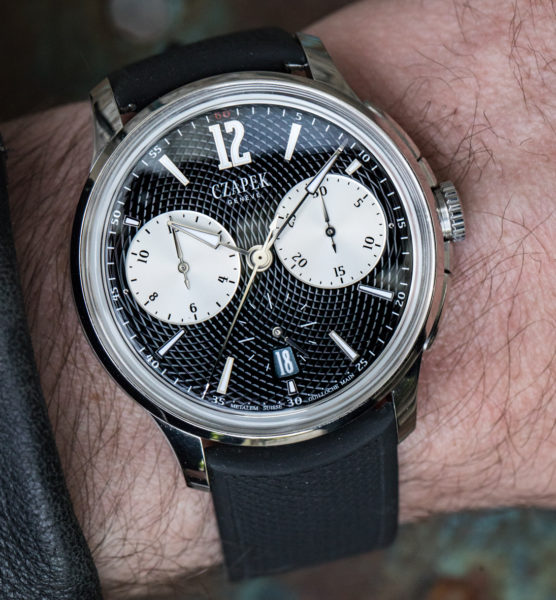
Interested in checking out the other Czapek Faubourg de Cracovie models in person? Then don’t miss out on attending WatchTime New York this October! Tickets are going fast; order yours here.







Can’t wait to see them in person. Im waiting for white enamel dial. Will see the again this year at the show. I haven’t seen Moritz Grossmann as one of the exhibitors this year on list. Are they going to be there? Thanks
On my list of watches ill be very happy to look at in October. Bravo Czapek!